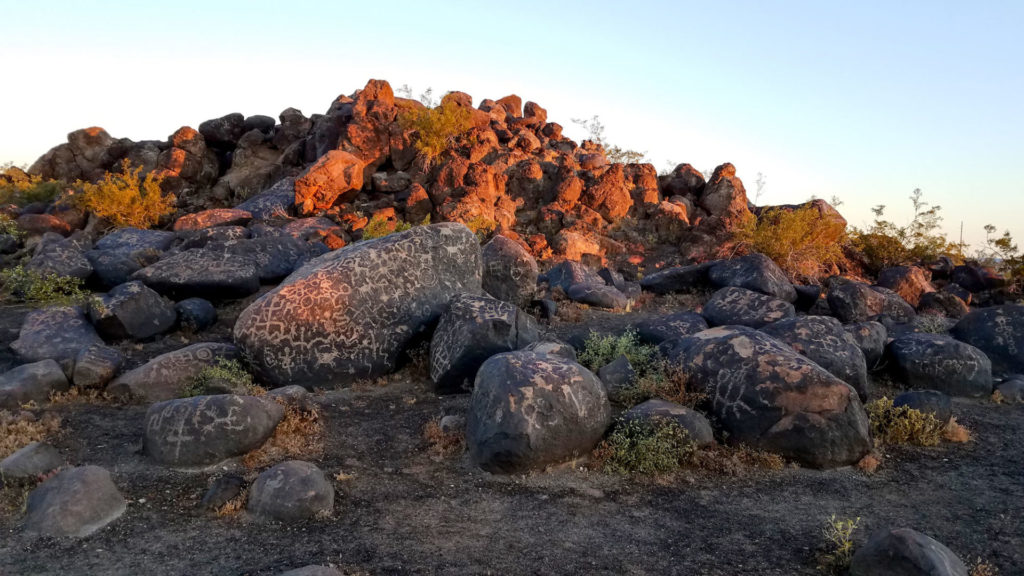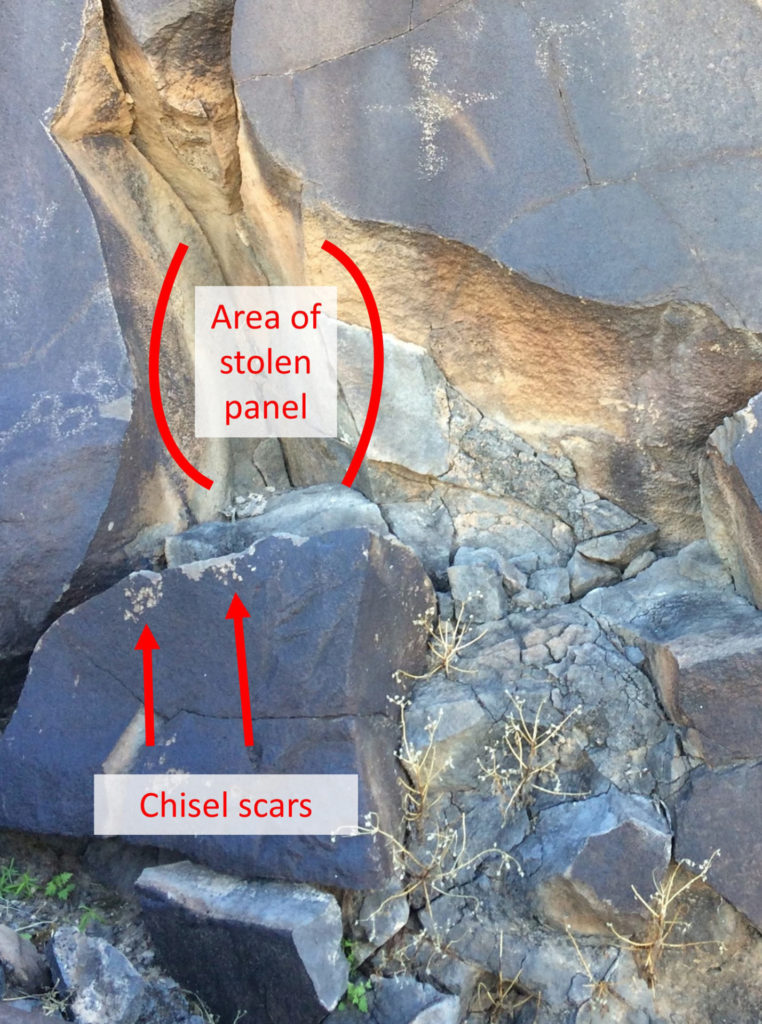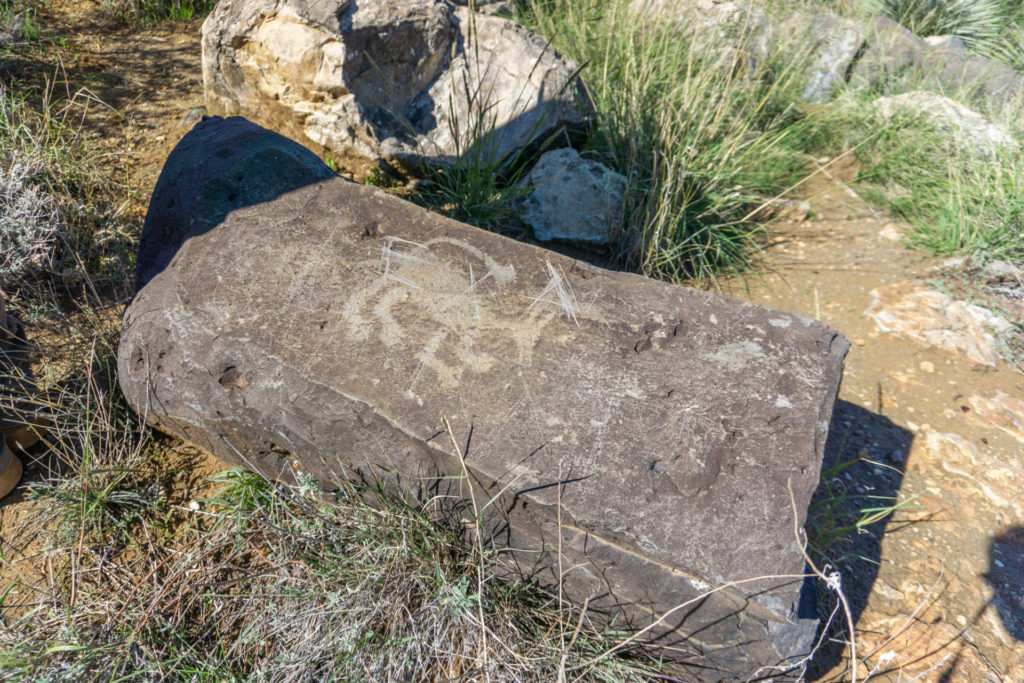- Home
- >
- Preservation Archaeology Blog
- >
- Vandalism and Petroglyphs

(March 16, 2020)—Based purely on anecdotal evidence, I am comfortable declaring that archaeologists have a high level of job satisfaction. I know I’m not the only one who recognizes that it is a privilege to craft a career from studying the past and advocating for the protection of cultural resources. Our jobs can take us to wide-open and magnificent spaces or allow us to open up a window to the past underneath a busy city street. And I consider the opportunity to work at sites with petroglyphs—those ancient images etched or carved onto rocks—as one of our many benefits.
My fascination with petroglyphs began on my first trip to the Southwest, and my copy of Images in Stone, gifted to me when I was an aspiring shovelbum, still holds a special place on my shelf. I should mention that I am not a petroglyph expert—I rely on the work of specialists who have so skillfully dedicated themselves to the topic. Rather, my passion lies in exploring how to protect these types of resources. And, like many of you, I enjoy visiting sites on public lands in my free time, if access is allowed.

Petroglyphs are often found in beautiful, quiet places, and they offer a reminder of whose traditional lands we inhabit. Many of the symbols I see are recognizable, but others elude me; some may hold meanings only known to people in the past, and other messages are simply not for me to know. Petroglyph sites are associated with sacred Native American traditions and ceremonial occasions, and as such they are an integral part of a cultural landscape that must be respected and protected.
Unfortunately, these places are far too often desecrated by vandals. Damage usually consists of bullet marks or graffiti that is carved, pecked, or spray-painted over the boulders. In more horrific instances, images or entire panels have been removed with power tools—history stolen to be sold on the black market.

We refer to this destruction as archaeological resource crime because when it occurs on public or Tribal lands, it violates federal and state laws. Moreover, these acts are not victimless crimes; they cause harm to Native American communities, disrupt traditional practices, and alter or destroy a nonrenewable resource forever.
Protecting sites and landscapes is a formidable task for tribal and public land managers, especially when continuously faced with policies and proclamations that do not value or prioritize cultural resources. One distressing example is the shrinking of Bears Ears and Grand Staircase-Escalante National Monuments. This action leaves an astounding number of archaeological sites vulnerable to damage in a region that is already heavily targeted by looters. Therefore, it is the responsibility of those who appreciate these resources to find ways to protect them.
At Archaeology Southwest we have opportunities to coordinate with other agencies and stakeholders to help put an end to archaeological resource crime. I realize this is an ambitious goal, but how could we aim for anything less?
I believe that we can succeed if we work with other organizations and individuals who are equally passionate about these issues. My optimism received a healthy boost earlier this year when I attended the Combat Vandalism event hosted by the Utah Public Archaeology Network. This meeting provided a forum for people from diverse backgrounds to discuss how to end the destruction of archaeological resources. All agreed that the problem calls for a concerted, data-driven effort that includes outreach, remediation, and Tribal participation.
If we want to prevent archaeological resource crimes, then we have to understand the full scope of the problem. Some people responsible for damaging sites may not realize their actions are wrong, or they would not leave identifying markers in graffiti or boast to the media about stealing artifacts. Others might flagrantly disregard anti-looting laws based on a misguided belief that we are entitled to own or profit from another’s heritage.

Once we understand what drives people to engage in these destructive behaviors, and where and when it occurs, we can work to educate, inspire, and recruit groups to actively protect heritage sites. And it is imperative that we listen to Tribal members about why these places are important and that we highlight their voices in prevention efforts.
Petroglyph sites will always attract visitors because symbols etched in stone speak to us in powerful ways. We must remember that these places have a larger and more important role to those whose ancestors created the images. It is essential for these places to remain unharmed.
For tips on how to respectfully visit petroglyph sites visit https://urara.wildapricot.org/Site-Etiquette. To report acts of looting and vandalism, please call 1-800-637-9152.
One thought on “Vandalism and Petroglyphs”
Comments are closed.
I was going through estate sale websites for sales in my area and saw a large petroglyph example for sale. I love it and would like to purchase it, but I’m not sure of the legality of owning such an artifact. I suspect that if it is being advertised for sale, that it isn’t authentic. How can I find out about the legality of buying this?